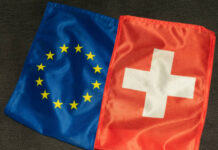Markets
US markets were closed yesterday in observance of Veteran’s Day, thinning trading conditions at the start of the week. For now, the by default trading mechanisms are the ones put in place after US Republicans secured their hattrick last week. The dollar sets the pace in FX markets with the trade-weighted greenback (DXY) closing in on 106.13 June top (currently 105.70). It’s the first of a set of mediocre resistance levels on the way to the upper band of the sideways trading channel in place since the start of 2023. Via 106.52 (2024 top) and 107.11 (Nov 23 high), we arrive at the 2023 top of 107.35 which is still our preferred scenario. EUR/USD sets a new short-term low at 1.0630 this morning and is equally looking at 1.0601 (2024 low) as final support ahead of the range bottom of the past two years (1.0448). The People Bank of China fixed the yuan at its weakest since September (USD/CNY now 7.2350), suggesting that a weaker currency will become part of the policy mix. Regulators are also planning to cut taxed for home purchases as the government drives up its fiscal spending efforts to revive the economy.
The underlying trend in (long-term) bond yields is still up as markets gear up for more fiscal stimulus on a global level. These short term growth and inflationary boosting measures come with a higher credit premium as well. Last week’s first ever positive Bund/swap spread is a point in case with the German government heading to early elections as the coalition collapsed over breaking up the debt brake. Such fiscal strategies have implications for monetary policy as well with BoE governor Bailey’s call for activism making way for “not too many and not too much” after calculating the impact of Chancellor Reeves’ 2025 budget. A higher growth and inflation peak in 2025 call for a careful monetary approach given that inflation remains stick above the 2% targets.
News & Views
An article in the Financial Times suggests that the European Union is preparing a change in its spending policies that can potentially redirect tens of billions of euro to defense and security. According to the reporting, the policy shift could apply to about a third of the EU’s common budget mentioning an amount of about €392bn over the 2021 to 2027 budget period as only about 5% of these cohesion funds have been spend. For now, the funds can’t be used to fund the military, but according to the FT referring to EU officials, more flexibility will be allowed to support the defense industry and to support military mobility projects. The FT quotes a spokesman of the European Commission saying that cohesion funds could be used for the defense industry as they contribute to the overall mission to enhance regional development, including military mobility. According to the FT analysis, this shift in spending might also be supported by net payers of the EU budget who see it as preferable to issuing joined debt or providing additional EU funding.
Czech inflation accelerated further to 0.3% M/M and 2.8% Y/Y in October. The outcome was in line with expectations but shows a further rise from September (-0.4% M/M and 2.6% Y/Y). The monthly increase was mainly due to of housing, water, electricity, gas another solid fuels (0.4%). Food and non-alcoholic beverages rose 0.3% M/M. Price of goods in total increased by 0.2% M/M and 1.3% Y/Y. Prices of services were 0.5% higher in a monthly perspective and 5.3% compared to the same period last year. Core inflation at 2.4% Y/Y was in line with the forecast of the Czech national Bank (CNB). While still within the CNB tolerance band, the gradual rise in inflation comes as the CNB and its governor Michl recently indicated that they were considering a halt to its rate cutting cycle after the policy rate was reduced to 4% at last week’s policy meeting. In this respect, Michl indicated that he prefers core inflation to decline slightly below the 2% target. After a temporary rebounding last week, the Czech koruna currently again trades slightly weaker near EURCZK 25.34.












